Deep Plane Facelift vs. High SMAS: Which Is Better for Asian Facelift?
2025-05-11
Facelift surgery, also known as rhytidectomy, is a cosmetic surgical procedure designed to reverse the signs of facial aging, such as sagging skin, facial wrinkles, and loss of skin elasticity. The primary goal of a face lift procedure is to tighten sagging skin, jowls, nasolabial folds, facial muscles, and underlying tissues, restoring a more youthful and rejuvenated appearance. There are various face lifting procedures, including Dual Plane SMAS facelifts, Deep Plane facelifts, and Mini facelifts, each with its unique approach and benefits. Dr. Nk Park, a board-certified plastic surgeon in Korea, explains the most suitable facelift procedure for the Asian face
Why Are Asian Facelift Results Often Poorer Than in Caucasian Patients?
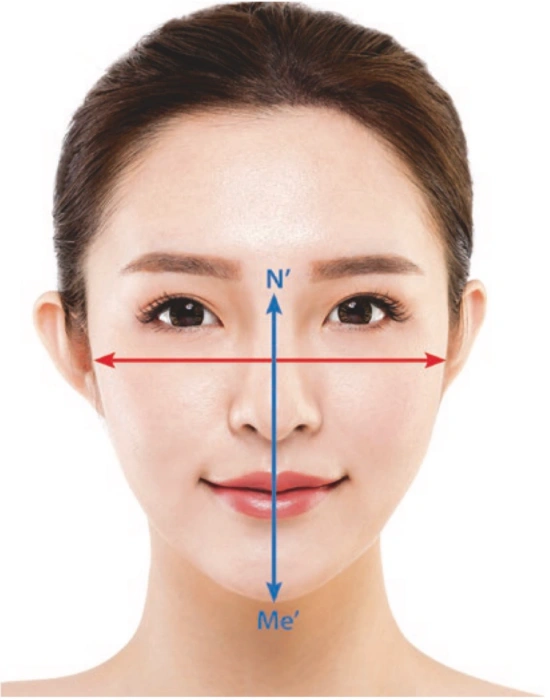
One key reason for varying face lift outcomes between Asian and Caucasian patients lies in facial anatomy.
Wide Face
For an Asian patient, the face tends to be wider, requiring deeper and more medial dissection for effective rejuvenation. This makes achieving visible results more technically demanding.
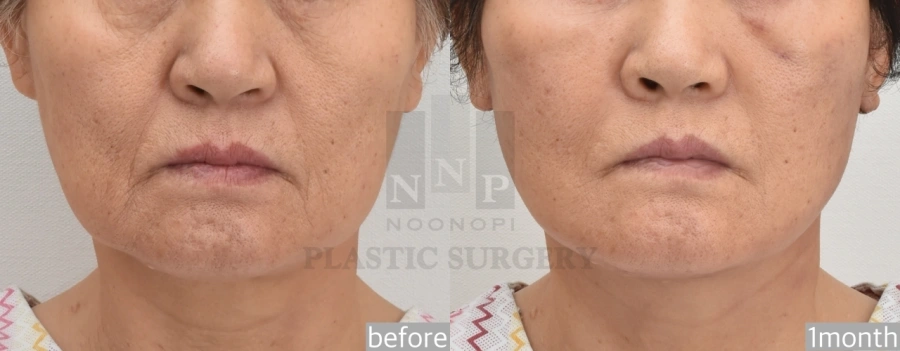
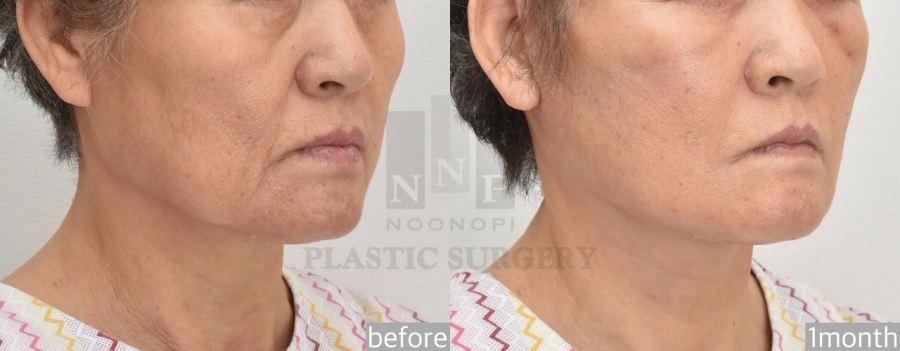


Facelift, neck lift, subbrow lift 7 month post-op
Thick Skin
Additionally, the presence of thicker and heavier tissues in Asian patients necessitates careful support during surgery to achieve durable and natural-looking rejuvenation while minimizing scarring and downtime.
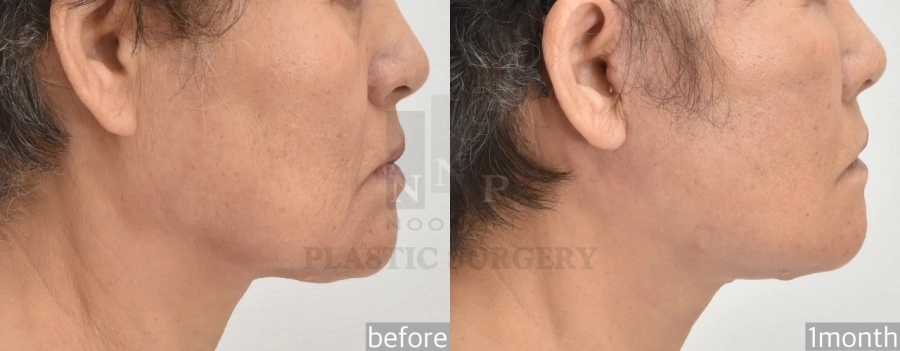
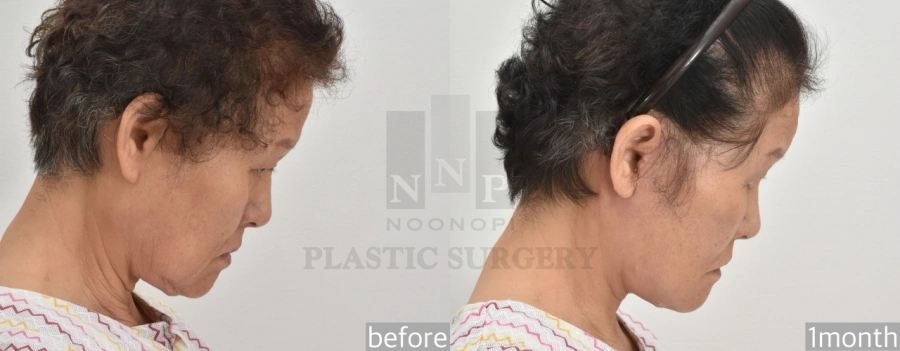
Facelifting Techniques Explained
Which face lift technique is superior? This question has fueled debate among plastic surgeons for decades, particularly when comparing SMAS methods. Some studies argue there’s minimal difference among techniques(Is there a difference? A prospective study comparing lateral and standard SMAS face lifts with extended SMAS and composite rhytidectomies), while others suggest otherwise. Less invasive methods are often highlighted as alternatives to traditional face lift surgeries, catering to diverse patient preferences. Meanwhile, long-term studies on identical twins using different face lift techniques show nuanced outcomes without a clear winner(Identical Twin Face Lifts with Differing Techniques: A 10-Year Follow-Up). Yet, most experts agree: surgeon skill matters more than the technique itself.
Here are popular face lifting methods preferred by Korean plastic surgery doctors today, including both less invasive and more invasive methods tailored to individual needs.
Lateral SMASectomy
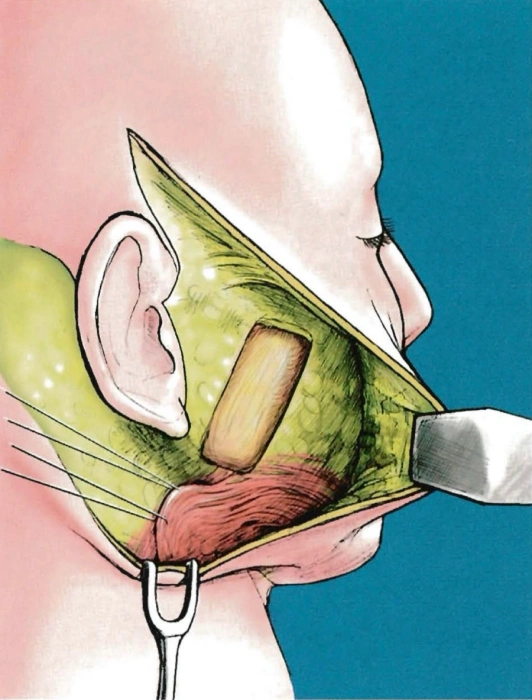
This involves excising and tightening the SMAS layer laterally. While there’s no official term called “Korean facelift,” this relatively less invasive method is commonly used outside the Korea. This technique is designed to ensure minimal risks, with low complication rates and protection of nerves during dissection, resulting in safer procedures and better outcomes for patients. This technique is technically less demanding, making it accessible to surgeons with varying levels of experience.
Extended SMAS / High SMAS

This is the method used at Noonopi Plastic Surgery. Dr. Nk Park closely follows the techniques of renowned surgeons like Dr. Timothy Marten and the late Dr. Bruce Connell. However, adjustments are made to accommodate the broader facial features among Asians, including wider medial dissection. This technique also involves lifting and tightening the soft tissues to restore youthful contours and achieve natural-looking results.
Composite or Deep Plane Facelift
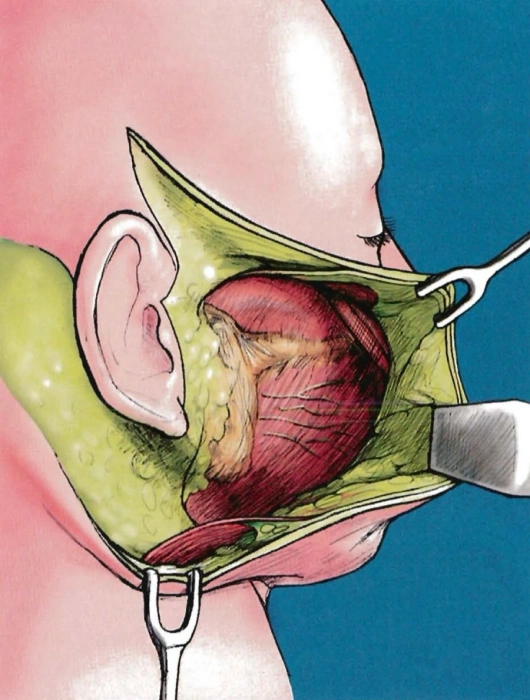
This approach involves minimal subcutaneous dissection followed by lifting beneath the SMAS layer. This technique effectively addresses loose skin by repositioning underlying tissues and tightening the facial structure for more youthful contours. As the dissection continues medially, the skin, subcutaneous fat, and SMAS move together as one unit—hence the term “composite face lift” by Hamra.
While this technique has stood the test of time, recently, a new generation of surgeons has introduced buzzwords such as 'extended deep plane face lift' to draw attention.
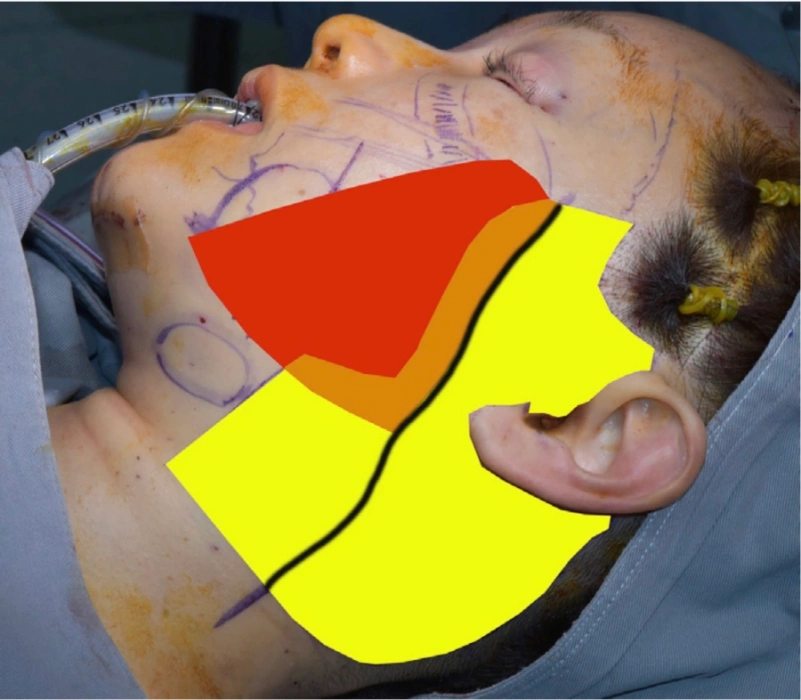
The area of the subcutaneous (yellow and orange) and sub-SMAS (orange and red) dissection is illustrated. The black line indicates an incision for deep plane entry.
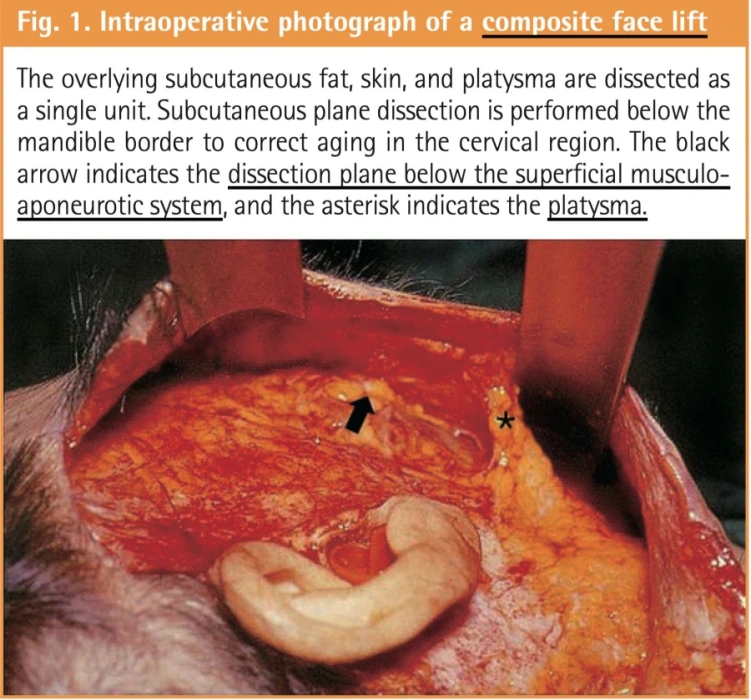
Is Composite Facelift the Ideal Solution for Asians?
Some surgeons like Dr. Chin-Ho Wong and Dr. Taek Keun Kwon argue that the composite face lift is particularly well-suited to Asian facial structure. In fact, it seems like growing numbers of Korean plastic surgeons at Gangnam are adopting this approach.
High SMAS: Better Results Than Deep Plane for Asians!
At Noonopi, our view is slightly different. Although composite face lifts may allow for quicker procedures and easier recovery, we find that High SMAS facelifts offer superior results in terms of facial harmony and longevity—especially in Asian patients. Additionally, the High SMAS technique provides a long lasting effect by effectively lifting both the skin and deeper facial structures, ensuring a more natural and enduring outcome.
Below is a comparison between published results by deep plane surgeons and real Noonopi patient outcomes.
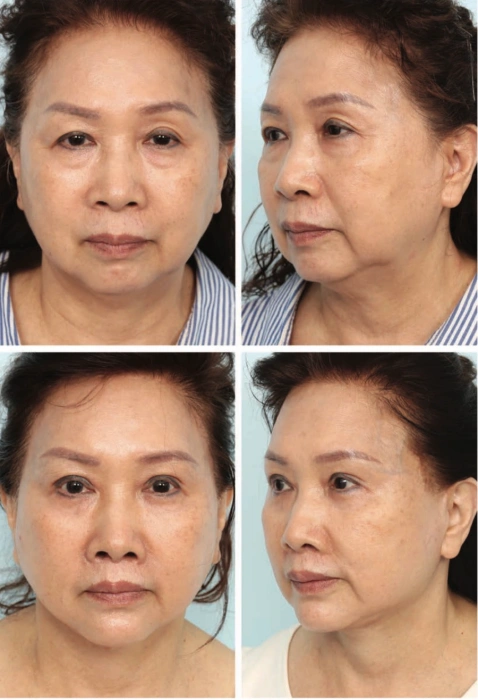
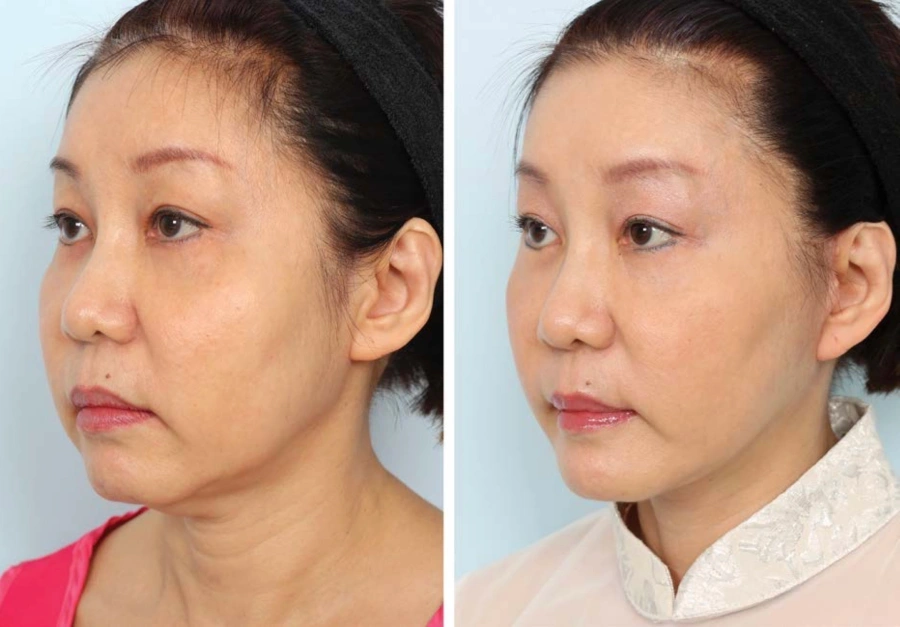
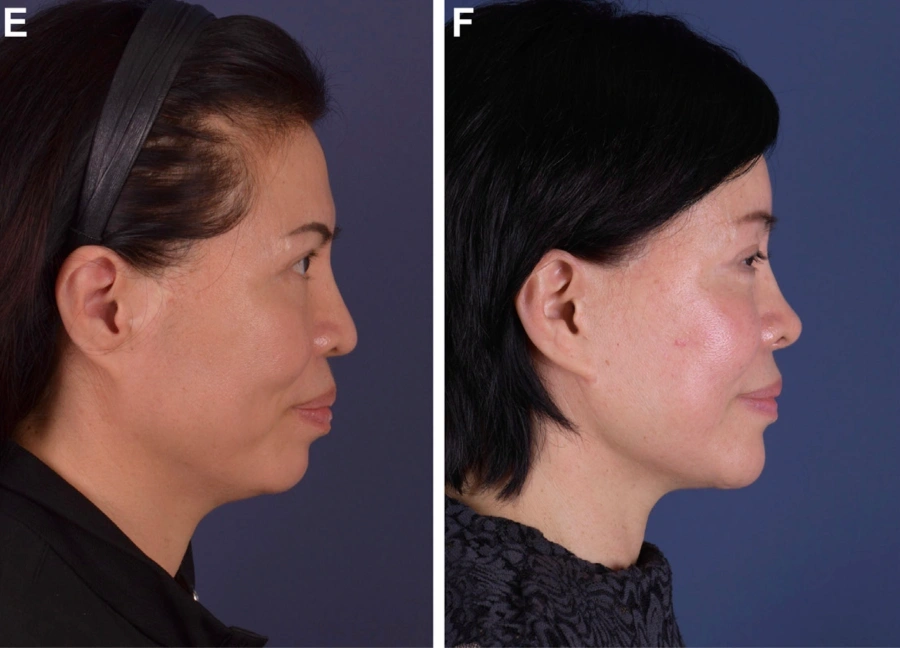
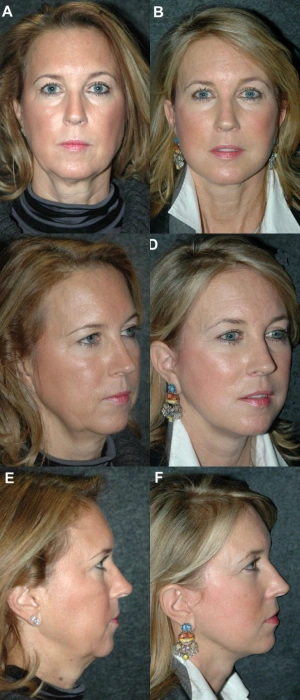
The High SMAS technique is particularly effective in addressing sagging cheeks, lifting and tightening the skin to achieve a more youthful facial contour.
before and after Asian face lift high SMAS vs deep plane
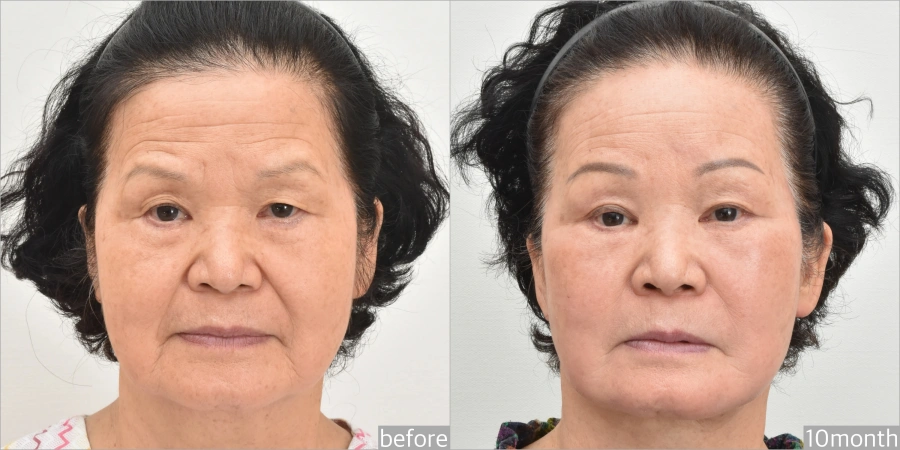
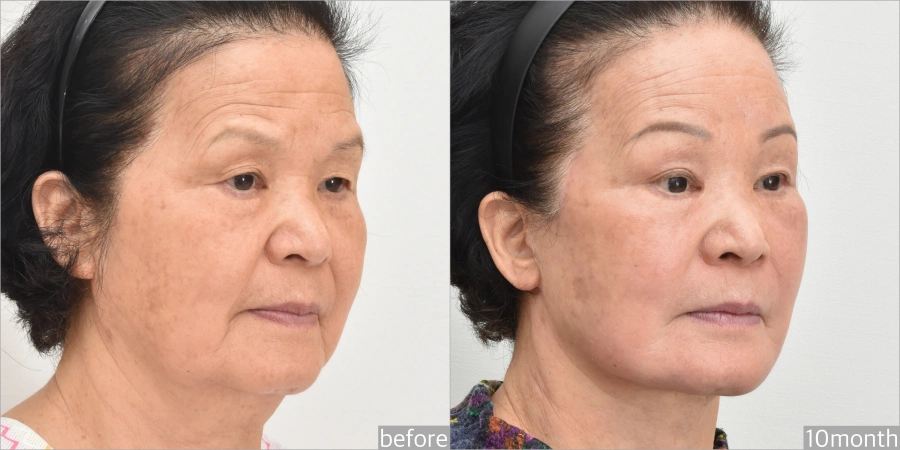
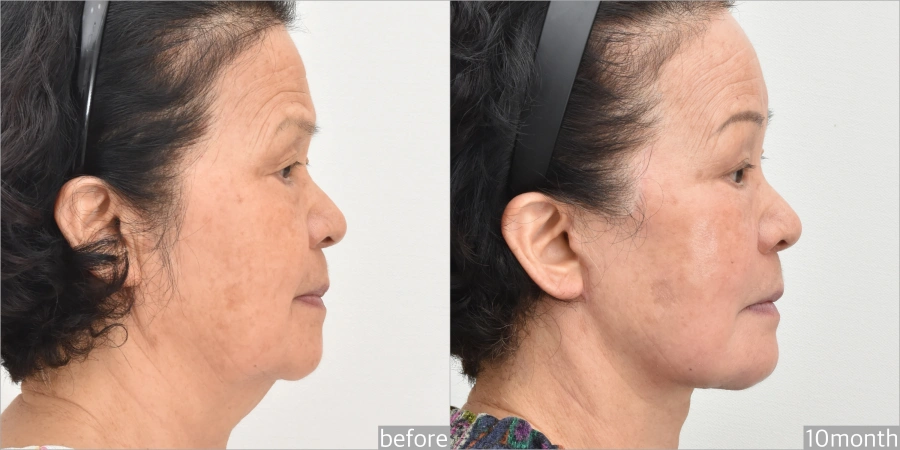
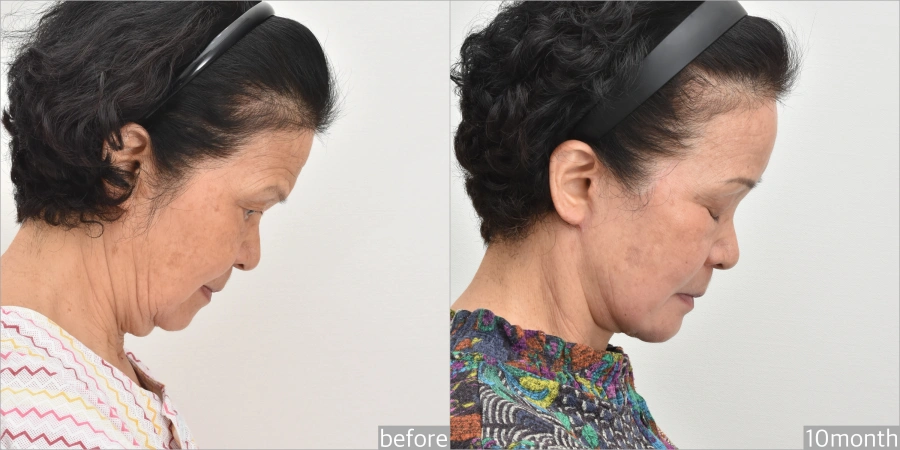
Risks and Complications of Face lift
As with any surgical procedure, face lifts carry potential risks and complications, such as asymmetry, scarring, infection, nerve damage, and skin irregularities. However, these risks can be minimized by choosing a qualified and experienced board-certified plastic surgeon. It is essential to discuss the potential risks and benefits of a face lift procedure with a plastic surgeon, considering individual factors, such as skin type, age, and overall health. By understanding the potential risks and taking necessary precautions, patients can make informed decisions about their face lift procedure and enjoy a safe and successful surgical experience. Additionally, it is difficult to give an exact duration for results post-surgery due to the unpredictability of individual skin properties and aging processes.
Read more about facelift side effects
What the World’s Best Facelift Surgeons Say About non-Caucasian Facelifts
Dr. Bruce Connell—often called the Michelangelo of facial rejuvenation surgery—was a master of dual-plane SMAS facelift rather than composite lifts.
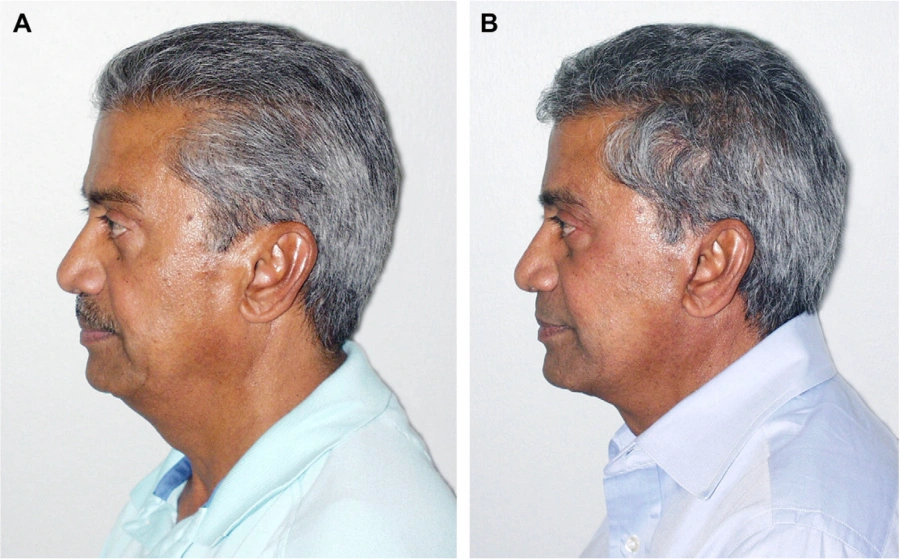
However, East Asian case studies remain underrepresented in early Western literature, requiring adaptation of these techniques in Korean surgical practice. In particular, nasolabial folds are a key focus in Asian face lifts, with specific techniques developed to enhance their appearance.
Fat grafting is also commonly used to enhance facial aesthetics during or post facelift surgery, adding volume to areas like the nasolabial folds and cheeks for more natural-looking results and improved long-term outcomes.
How Noonopi Approaches the Asian Patients
Dual-Plane High SMAS
We combine precise skin and SMAS dissection with tension-free closure for natural and youthful results. Additionally, the technique involves carefully designed and marked skin incisions to ensure effective access to deep anatomical planes, particularly in facial and neck areas, which is crucial for safety and optimal outcomes. These incisions are strategically placed to make any resulting scars nearly invisible after the recovery period.

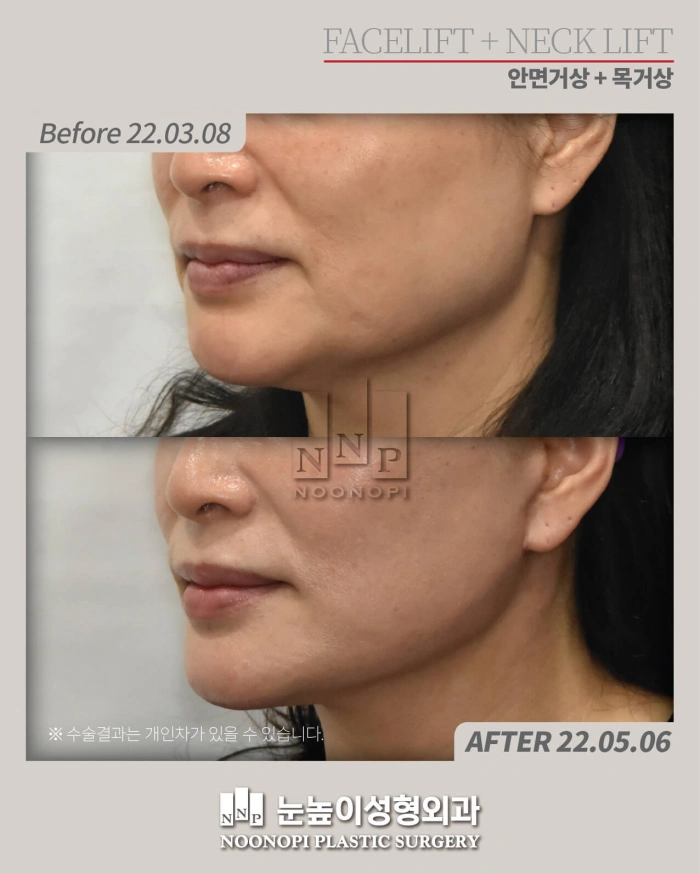

More Medial Dissection of Facial Anatomy than Dr. Connell
Due to facial width, we dissect further medially in the malar and nasolabial regions than traditional Caucasian-focused designs. This technique also effectively addresses sagging and volume loss in the cheek area, ensuring more natural and long-lasting outcomes. Incisions typically begin in the temple area and extend around the ear, allowing access to deeper layers of facial skin and muscles.
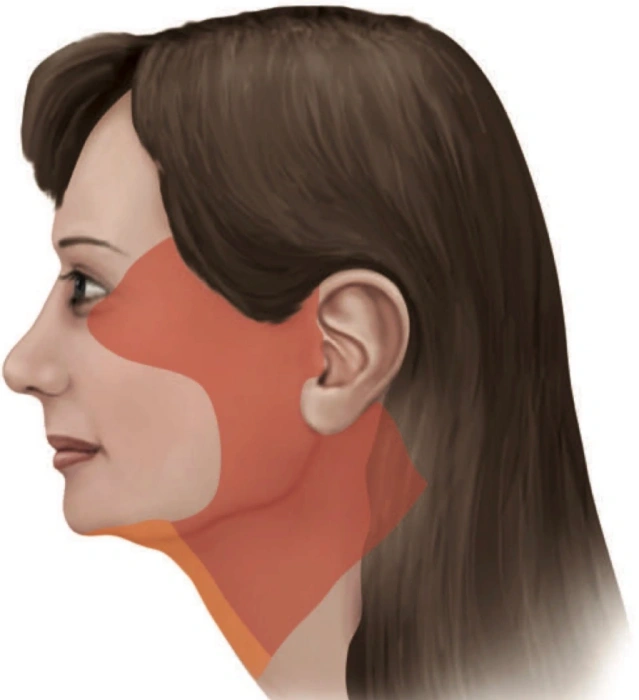
Hyperbaric Oxygen Therapy for Recovery
Because High SMAS face lifts require more delicate dissection, we support healing with HBOT (Hyperbaric Oxygen Therapy). Our premium, single-patient chamber enhances skin flap survival and accelerates facelift recovery for optimal outcomes.
When Deep plane facelift are performed?
However, for faster recovery, Noonopi also performs deep plane facelift techniques when appropriate.
This approach lifts the skin and deeper facial tissues together as a single unit, minimizing trauma to surrounding structures and reducing swelling and bruising. While it provides slightly less access than the High SMAS in certain neck areas, it offers excellent midface rejuvenation with a more comfortable recovery period. Dr. Park carefully selects the best technique—or a combination of both—based on each patient’s anatomy, goals, and downtime preferences.




